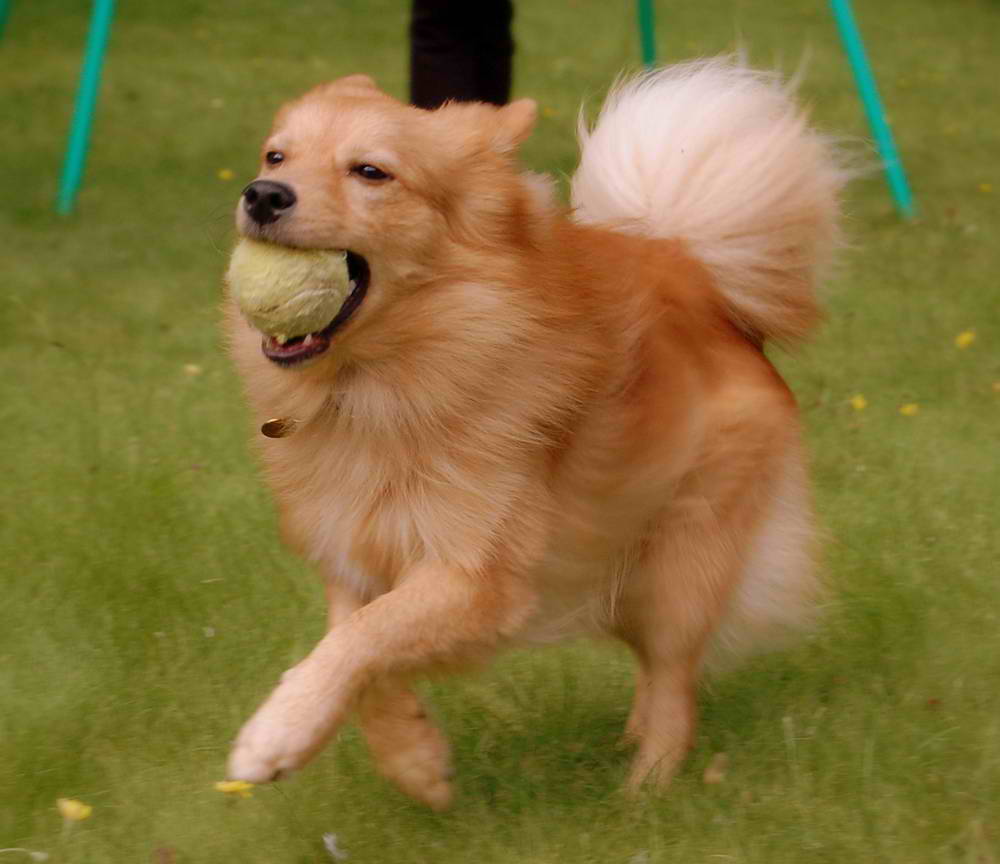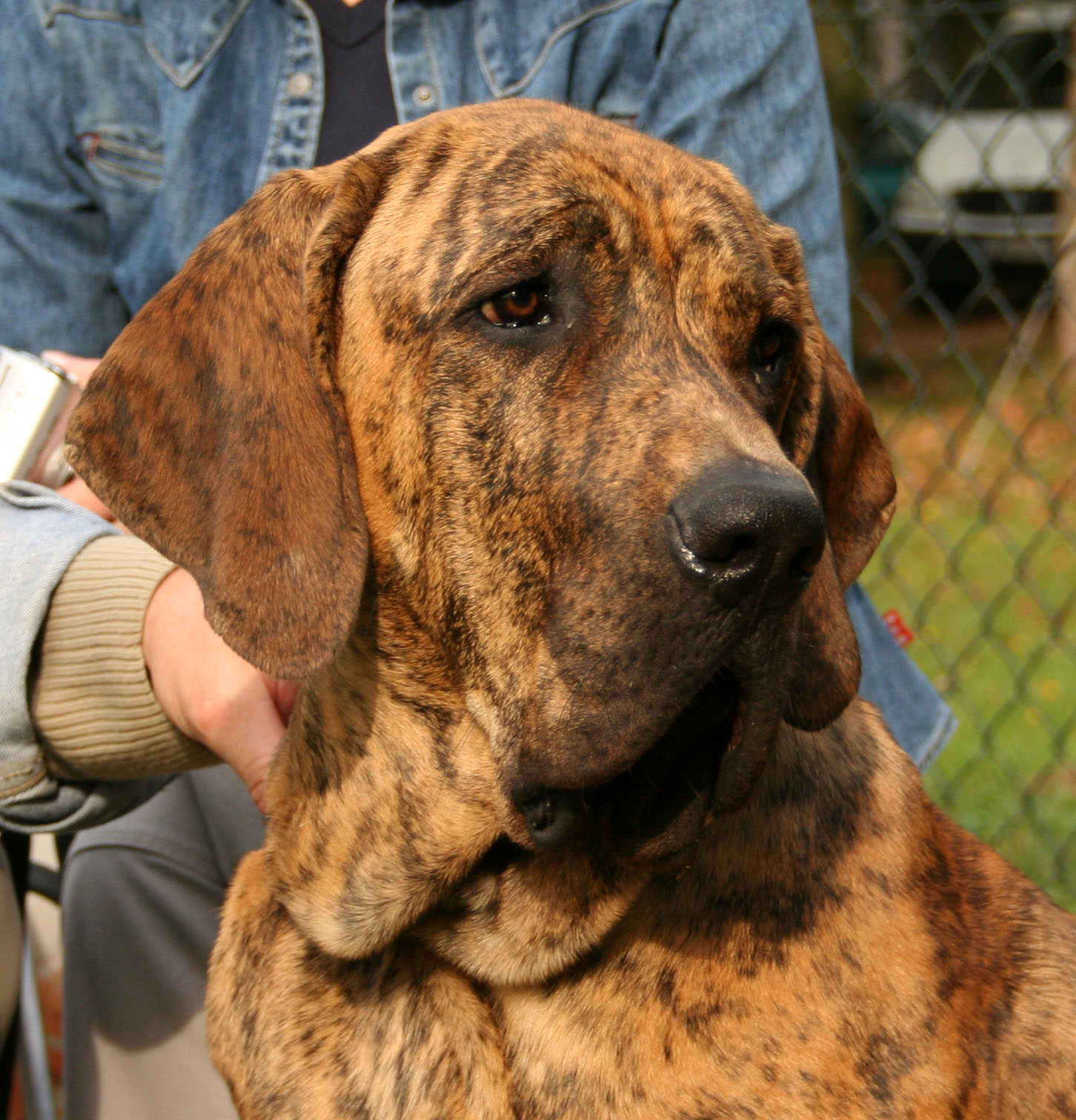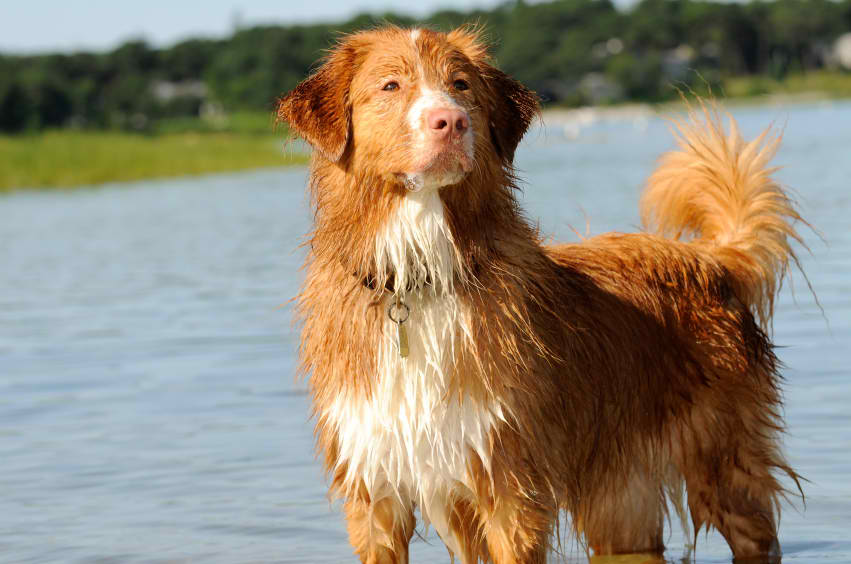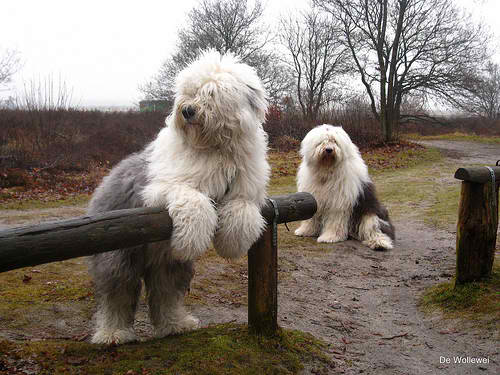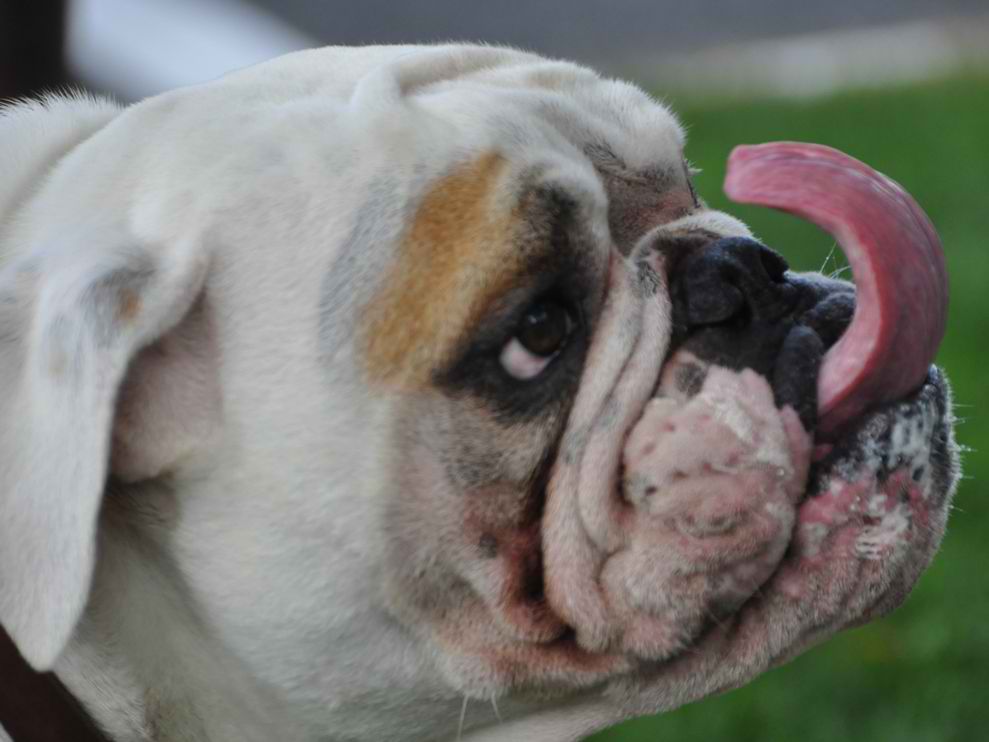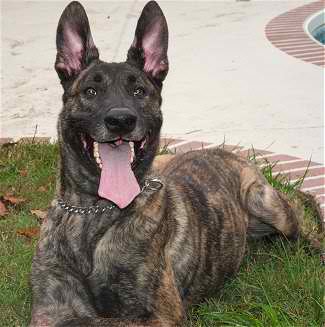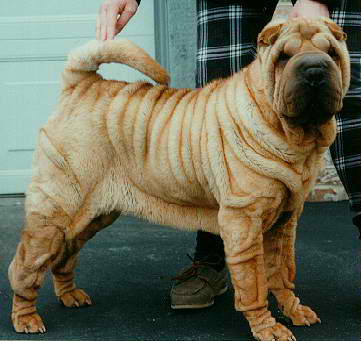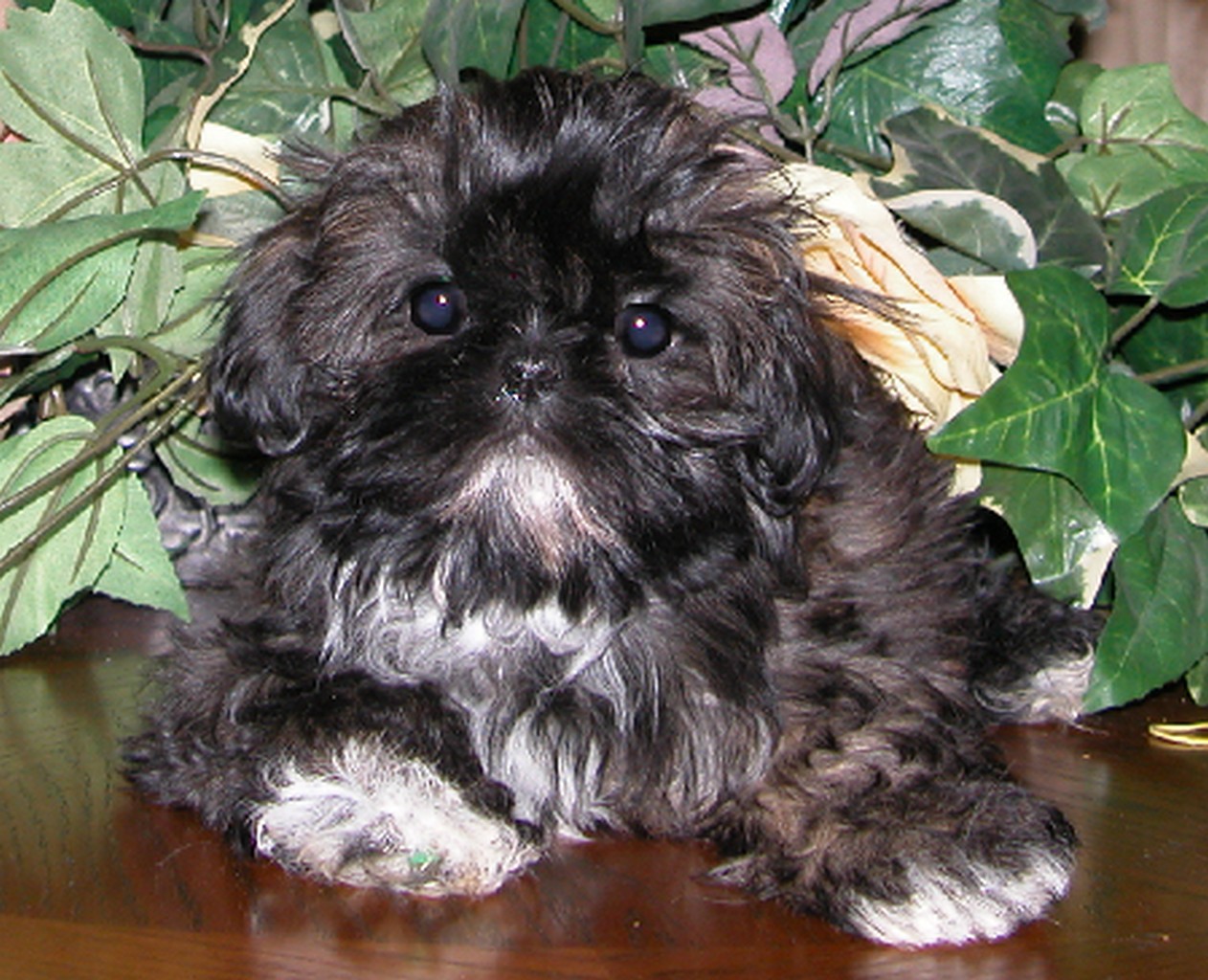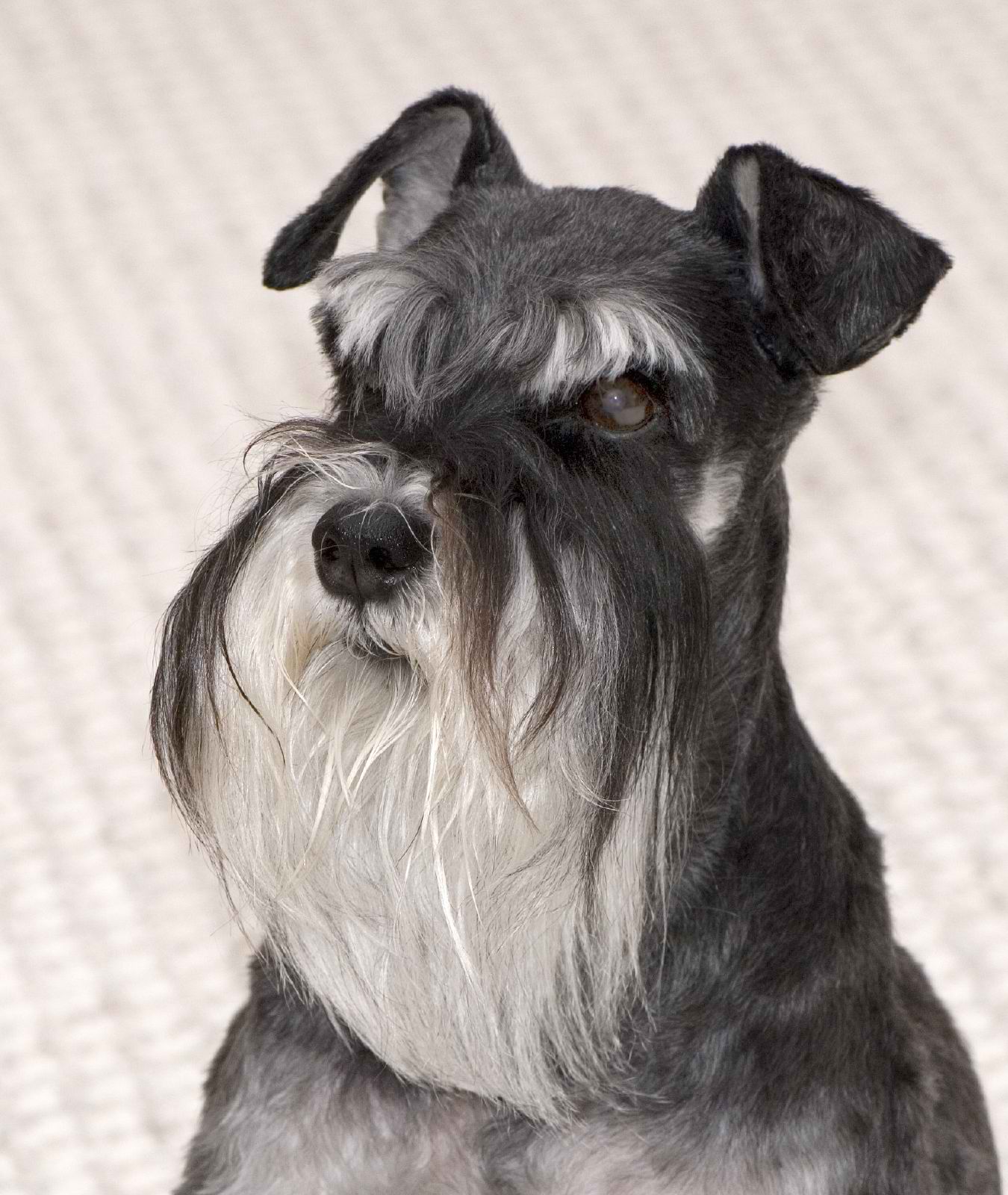The Foxy Barker: Finnish Spitz
Country of Origin
These beautiful dogs, also known as the Finnish Barking Bird Dog, originated from Finland and were bred for hunting, usually barking and pointing when they?ve located game. They also bark as a form of distraction. The Finnish Spitz is now known as the national dog of Finland, and can only enter the show ring once they?ve completed a series of hunting trials. They are quite rare in the United States, but there is an American Breed standard for them that was formed in 1976.
Size
Usually 15 to 20 inches in height and 14 to 16 kilograms in weight, these medium sized dogs are very fox-like in appearance with a pointed muzzle, high ears, and thick, curled tails. The nose and eyes are always black.
Coat
These spitzes have dense double coats, with the males having longer strands as compared to the females. They usually come in fawn, gold, reddish brown, or honey, and is never solid (certain parts are usually darker than others). Sometimes they have white markings on their feet and on their chests.
Character
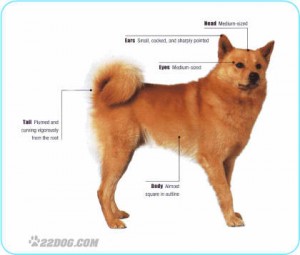 These energetic dogs can be great family pets as they love children and are very tolerant of them. They enjoy playing with kids, but as with all dogs, must be supervised in case things get too rough. They can be quite dominant and need to know their place in the pack, otherwise they can develop overprotectiveness that can be a gateway to aggression towards people they find suspicious. They are very loyal and prefer being in close quarters with their family. Leaving them outside, caged or tied up will certainly cause chaos because they are prone to separation anxiety and they are heavy barkers. They were bred to bark, and it is instinctual to them to bark at anything they perceive as out of the ordinary.
These energetic dogs can be great family pets as they love children and are very tolerant of them. They enjoy playing with kids, but as with all dogs, must be supervised in case things get too rough. They can be quite dominant and need to know their place in the pack, otherwise they can develop overprotectiveness that can be a gateway to aggression towards people they find suspicious. They are very loyal and prefer being in close quarters with their family. Leaving them outside, caged or tied up will certainly cause chaos because they are prone to separation anxiety and they are heavy barkers. They were bred to bark, and it is instinctual to them to bark at anything they perceive as out of the ordinary.
Temperament
This breed needs plenty of exercise and training in order to be manageable. Failure to give this dog what he needs will cause boredom that will lead to destructive behavior. They need proper socialization with people, other dogs, and must be used to being touched (associating this with positive things like food will help) so that trips to the vet will not be a problem. They can be independent and a bit stubborn, but training, although challenging, is not impossible. Being pretty dominant, they don?t really do well with other dogs of the same gender, or dogs that are overly dominant. Do not expect this breed to be nice and quiet, as they are very alert dogs that bark a lot to warn their owners of anything suspicious, making them excellent guard dogs.
Care
This Spitz sheds quite a lot and needs regular brushing. They would do okay indoors, as they love being with their owners and they prefer cool environments, but this would only work if they are given enough exercise. If they are needed to be kept outside, then they need high fences as they are very quick and agile and can most probably jump over a low fence.
Training
These dogs need consistent training so that the owners can remind them that they are not in the alpha position and cannot be dominant. Positive reinforcement will do well with them, and also plenty of patience and good timing, because they can be pretty manipulative.
Activity
Daily walks and runs will do them good, and if you succeed in training these clever dogs, then they can also be great for dog agility as they are very quick on their feet.
Fila Brasileiro: The Ultimate Guard Dog
Country of Origin
The Fila Brasileiro is a Molosser that originated from Brazil. It is related to the Bloodhound, English Mastiff, Bulldog and Rafeiro do Alentejo, which gives it its large and loose-skinned appearance. They were once used to guard properties and estates, especially farms, where they would track and hold down intruders and wild animals by the neck until their owners arrive. These abilities, in addition to an excellent sense of smell inherited from the Bloodhound, also make them effective trackers and hunters, and their instinctual protectiveness make them a great choice for protecting and controlling livestock.
Size
These massive dogs are usually 25 to 29 inches in height, and 40 to 50 kilograms in weight. They are big, muscular dogs with large heads, large ears, droopy upper lips, broad chests, thick and wrinkled necks, and powerful bones.
Coat
This breed has a very short coat with a variety of colors such as black, fawn, black and tan, or brindle, and they sometimes come with black masks.
Character
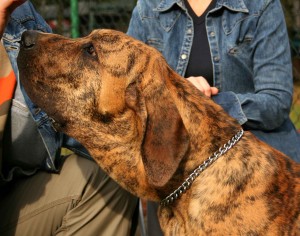 The Fila Brasileiro is a strong, courageous dog that is very suspicious of strangers, making it an excellent guard dog. Although they could be aggressive towards people they do not know, they are very family oriented dogs who would do anything to keep their human pack safe. They do not need to be taught to protect, as this comes naturally to them. These dogs are very dominant and must therefore have owners who know how to take the alpha position. This can be achieved through proper training that is firm and consistent.
The Fila Brasileiro is a strong, courageous dog that is very suspicious of strangers, making it an excellent guard dog. Although they could be aggressive towards people they do not know, they are very family oriented dogs who would do anything to keep their human pack safe. They do not need to be taught to protect, as this comes naturally to them. These dogs are very dominant and must therefore have owners who know how to take the alpha position. This can be achieved through proper training that is firm and consistent.
Temperament
This breed is highly loyal and obedient to an owner that has strong skills as a handler. They are not recommended for first time dog owners and inexperienced handlers as they are very demanding in terms of socialization, exercise and training. Failure to live up to the breed?s needs will cause problems such as frustration, destructive behavior, and aggression. Although they are great family pets that are very tolerant of children, these dogs are very anti-social towards other people, and are not recommended for homes with multiple pets as they have high prey drive and might see small animals as prey. In order to have a calm and reasonably friendly Fila, the owners must be dedicated to socializing this dog starting from a very early age and all throughout its life.
Care
The Fila is very easy to groom because of its smooth, short coat. Since they are working dogs that need lots of exercise and mental stimulation, they would not do well in small quarters like apartments. They need plenty of space to run, and need daily walks and training. Being big strong dogs that are wary of strangers, they need a home with huge, sturdy fences that they cannot jump over or destroy.
Training
This breed must be trained early during puppyhood, especially when they are still manageable in size. Allowing a Fila puppy to run your household and dominate over you will cause problems in the future, especially when he reaches maturity and is too big for you to control. Consistent and firm reward-based training would be good for this dog, and other activities like tracking or searching would be beneficial psychologically, and would help beat boredom.
Activity
These dogs are perfect protection dogs and can track, guard and hunt.
Nova Scotia Duck Tolling Retriever
Origin
This breed of dog has its roots from Canada. The Tolling Red Decoy Dogs have probably been thought to migrate with their British owners from England to Nova Scotia where they were crossed-breed with the laboring spaniels and retrievers. The Nova Scotia Duck Tolling Retriever was developed in order to toll (lure) the ducks in similar fashion of a fox.
This dog breed is happened due to the skillful creation of the Canadian hunters. The Nova Scotia Duck Tolling Retriever was initially known as the Yarmouth Toller or Little River Duck Dog. However, since the CKC started to register the dog breed in the late 50s, they got their current name from them. FCI finally recognized the dog internally in 1982.
Size
This cast of retriever looks much similar to the size of small Golden Retriever dogs. It has a well-proportioned body and is properly masculine which is medium to heavy bones in a dog. The male Nova Scotia Duck Tolling Retriever stands up 18 to 21 inches tall. The best considered height of males is around 19 inches tall. Female dogs of this breed are 17 to 20 inches tall while their general weight in composition to the height is about 35 to 50 pounds approx.
Coat
The Nova Scotia Duck Tolling Retriever has a water-repellent, medium length twofold coat. The coat that is colored in orange or red resembles a fox-type look, which thus at one time gave rise to folklore that this breed is originated due to a retriever and fox mating.
Character
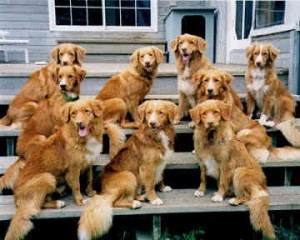 Nova Scotia Duck Tolling Retrievers have intelligent, inquisitive and smart characteristics. Their personality traits can be defined somewhere between those of Terriers and Golden Retrievers. They indeed have a sense of humor and are outgoing with an upbeat manner and character.
Nova Scotia Duck Tolling Retrievers have intelligent, inquisitive and smart characteristics. Their personality traits can be defined somewhere between those of Terriers and Golden Retrievers. They indeed have a sense of humor and are outgoing with an upbeat manner and character.
Temperament
The Nova Scotia Duck Tolling Retrievers loves to be in the company of their master/family and specially enjoys hunting. Their expression might look dull, but once out in hunting, they are the most happiest and active temperamental dogs you can have. Indeed, these dogs have a natural enthusiasm about their job and know what energy level is required to do it properly.
Care
Nova Scotia Duck Tolling Retrievers can live almost anywhere happily, in either town or cities, but only if a secured fence were built it would be much better. The one thing that the owner should need to care about them the most is their daily quota of walk, since it will keep them anxiety-free and comforted in their senses.
Training
Nova Scotia Duck Tolling Retrievers are highly intelligent and loves to be trained, but of course if it would be done in polite and rewarding manner slightly, you can have the best trained Toller at your dispense.
Activity
Since the Nova Scotia Duck Tolling Retrievers are highly energetic and packed with power, they usually have a higher activity level. They enjoy doing work and proper exercise with daily walks is the best way to ensure their level of energy is always maintained and filled up to their needs. Additionally, they will enjoy playing games as well such as retrieving a stick or ball.
Is the Old English Sheepdog The Breed For You?
Origin
The Old English sheepdog was developed in the western counties of Great Britain by the local farmers who require a well-coordinated and fast cattle driver and sheepherder in order to assist taking their animals to the market. The dog instantly becomes a famous and widely utilized animal in the agricultural places. Earlier in the 1700s, a way was created by the local harvesters in England to recognize the working dogs in order to obtain tax exclusion, and the method was to dock the tails of those dogs. The Old English sheepdog was first portrayed in Britain in 1873, followed by the recognition from AKC in 1888.
Size
An Old English sheepdog is equally proportioned, with a solid and square-type built. The average height of Old English Sheepdog males can reach up to 22 ? 24 inches tall, that is 56 to 61 centimeters while the females height is about 20 to 22 inches tall (51 centimeters). The average weight of Old English sheepdog for males is up to 65 pounds and female?s about 60 pounds. However, in some rear cases, their weight can grow up to a noticing 100 pounds as well that is almost 45 kilograms.
Coat
The coat of Old English sheepdog consists of huge hairs hanging out from his body. This dog has a profuse, shaggy, and a hair galore coat, which is neither curly nor straight. Old English sheepdog contains a double layer of coat, which is softer from inside and textured from outside. The usual colors in which this dog comes are fawn, blue merle, brown, gray, grizzle and blue, that are all marked with whitish dots.
Character
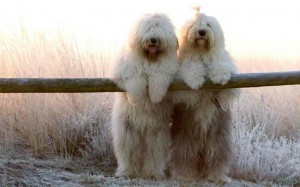 This dog filled with high amount of affectionate feelings and is playful, a supposed clown for his family and the owners as well as with the children surround him. The Old English sheepdog enters his adolescence around the age of three from where this dog holds on to his cheerful character.
This dog filled with high amount of affectionate feelings and is playful, a supposed clown for his family and the owners as well as with the children surround him. The Old English sheepdog enters his adolescence around the age of three from where this dog holds on to his cheerful character.
Temperament
One of the most well-liked and notable things about Old English sheepdog?s temperament is that it can alter oneself to any changing condition, while retaining his friendly and lovable nature at hand. With its mild temper and gentle dispositions, this dog stands as one of the most well liked companion for home and family.
Care
It is highly crucial for the Old English sheepdog to have his quota of activity be fulfilled, since adrenaline flows in his veins smoothly. It is best considered for Old English sheepdog to stay in places such as countryside where they can indulge themselves into sheep herding and lots of physical activity. A daily two to three hours exercise will also do a great job to ensure his full care and health.
Training
Just like with many strong-willed dog breeds, training for Old English sheepdog is also very crucial. Just be sure you use good and wise ways to teach him by setting limits for actions and rewarding slightly for good obedience will ensure his confidence in the teaching. Noticeable key is for the master of the dog as well and they should need to be strong willed as well to teach a grown up Old English sheepdog as well since it becomes hard in his ways.
Activity
You had to cope up with the changing needs for the age of a dog. However, typically the Old English sheepdog is quite energetic and pumped up but by the time he starts to become old, you may not keep him very much active. The only way to ensure a lifelong balanced activity level in Old English sheepdogs is to responsibly take them to daily exercise and running while continuing this throughout their life period. With this, you will have a balanced active dog for as long as he or she lives.
English Bulldog: Scary but Tender
Country of origin
The English Bulldog was developed in England and was bred to be a bull-baiter. Bull-baiting was a harsh sport wherein dogs were asked to bite and hang on to a bull for as long as they can, usually latching themselves onto the nose of the bull. As years passed and bull-baiting became illegal, people started to breed these dogs to be shorter and stockier and were then used as companion dogs. These dogs are now very popular and are among the top choices of dog breeds that families want to buy or adopt.
Size
This short breed is usually 12 to 16 inches in height and 22 to 25 kilograms in weight. They have flat, upturned noses, loose skin, short legs, and strong, wide jaws with an underbite. With wide heads, drooping lips, and muscular builds, these dogs can look quite intimidating but are actually sweet and cuddly.
Coat
English Bulldogs have short coats and loose skin that come in colors such as white, brindle, cream, or red.
Character
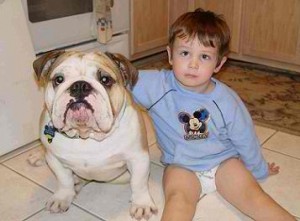 These loyal dogs are great for families with children because they are affectionate, gentle, people-oriented, brave, and are patient as well as tolerant when it comes to kids’ sudden grabs, wrestling and petting. They can be stubborn and hard-headed, but can be trained with the right kind of motivation. Bulldogs make a lot of weird noises like snorting or snoring in their sleep, which actually make them pretty comedic. These dogs can be pretty lazy and can be slow learners, but training them is not impossible.
These loyal dogs are great for families with children because they are affectionate, gentle, people-oriented, brave, and are patient as well as tolerant when it comes to kids’ sudden grabs, wrestling and petting. They can be stubborn and hard-headed, but can be trained with the right kind of motivation. Bulldogs make a lot of weird noises like snorting or snoring in their sleep, which actually make them pretty comedic. These dogs can be pretty lazy and can be slow learners, but training them is not impossible.
Temperament
English Bulldogs can be dominant over humans and other dogs, and must be well socialized as a puppy. These dogs could be excellent guard dog, but mostly because of their scary appearance, as they don’t really bark often. They get along well with strangers with socialization, as well as other dogs and animals, although must be supervised when interacting with a dominant dog that they might react negatively towards.
Care
The English Bulldog’s flat nose makes it prone to respiratory problems and to heat stroke. Their body structure also makes them prone to joint problems and must be properly supplemented. Their coats, having folds, must be properly cleaned in order to avoid skin problems, and their faces must be regularly wiped. They are perfect apartment dogs as they are very relaxed and prefer the indoors.
Training
It may be hard to train this breed, but it will still be beneficial for them to learn basic obedience. With the right kind of food or a favorite toy, the English Bulldog will certainly respond to your commands as long as you stay consistent and patient.
Activity
Although most Bulldogs are the epitome of a couch potatoes, they still require daily walks in order to keep him balanced. These dogs can easily gain weight, so exercise can aid in keeping them healthy. Daily walks can also keep these dogs calm for the rest of the day.
Knowing Dutch Shepherd Better
Country of origin
The Dutch Shepherd is believed to have developed in the Netherlands and is very similar to Belgian Shepherds. The only differences between the two breeds are in size and coat color. Dutch shepherds were originally bred to herd and protect sheep and cattle. They also served as guard dogs that alerted their owners of the presence of strangers on their land. Nowadays, aside from farm work, they have been discovered to be very efficient in police work, just like their Belgian relatives.
Size
These medium sized dogs usually grow from 21 to 25 inches, and are 23 to 30 kilograms in weight. They have flat foreheads, broad chests, dark eyes, high ears, long muzzles with strong jaws, muscular bodies, and brindle coats.
Coat
This powerful dog sports a double-coat, with the overcoat being quite rough, and the undercoat wooly and soft. The Dutch Shepherd has three types of coats: short, long and wire. With any kind of coat, the Dutch shepherd is always brindle-colored, either gold, gray, silver, blue or salt and pepper.
Character
This versatile breed is very intelligent, high energy, loyal, independent, and is very eager to please, which makes it a very competent working dog and is quite easy to train with the right kind of method (reward-based) and a strong handler.
Temperament
Dutch Shepherds are a jack of all trades, and are quite friendly as long as they undergo proper socialization as a puppy. They are loyal to their families and have an instinct to protect their owners and their property. They need owners who know how to be firm pack leaders that know how to handle their dogs with assertiveness but not with a heavy hand. They can be very good with children as long as they are properly introduced, and as long as the children are taught how to respect dogs’ boundaries and are shown how to interact with dogs.
Care
With all the types of coat of this breed except the wire-haired type, regular grooming and brushing is recommended in order to prevent excessive shedding. They can live in apartments but would prefer a home where they have space to run. Obedience training is a must, i you want a calm, balanced dog.
Training
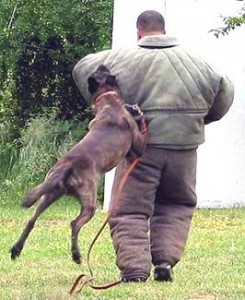 These high energy dogs need plenty of activities in order to be challenged both physically and mentally, as this breed can be very destructive when left to its own devices without ample exercise or training. Frustration due to boredom can also cause the Dutch Shepherd to develop issues like excessive barking, nipping at heels, and even aggression. They would respond well to positive reinforcement training that is consistent and purposeful.
These high energy dogs need plenty of activities in order to be challenged both physically and mentally, as this breed can be very destructive when left to its own devices without ample exercise or training. Frustration due to boredom can also cause the Dutch Shepherd to develop issues like excessive barking, nipping at heels, and even aggression. They would respond well to positive reinforcement training that is consistent and purposeful.
Activity
The Dutch Shepherd is an active dog that will truly enjoy an active lifestyle. Daily walks or runs are very important in order for them to stay calm inside the house, and they are very much capable of competing in dog sports such as dog agility, fly ball and Frisbee. In addition to herding, they would also do well in obedience trials, Schutzhund, protection training, and police work.
Chinese Shar-Pei: A Perfect Family Pet
Country of origin
The Chinese Shar-Pei is believed to have originated from a southern Chinese province and was bred to be farm, hunting, and guard dogs. It is speculated that they are related to the Chow Chow due to a unique trait: their similar purple tongues. Their wrinkled, prickly bodies very effective in fighting off wild animals that they hunt, because they can easily twist around to bite their attacker due to the looseness of their skin. This particular characteristic gave people the idea of involving Shar-Pei in dog fighting, until it was rightfully banned. Its name means “Sand coat.”
Size
These unique dogs grow from 17 to 20 inches, and weigh up to 25 kilograms. They have squarish bodies, a wide and short muzzle, triangular ears, thick and curly tails, a purple tongue, and of course, wrinkled skin. Although the traditional Chinese Shar-Pei have less wrinkles, it is the modern Shar-Pei (with more folds) that is being increasingly more popular nowadays.
Coat
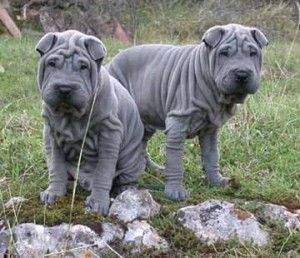 There are two common types of coat for the Chinese Shar-Pei, the Brush coat and the Horse coat. Both are sand papery and rough, with the only difference being the length. The Brush coat can grow up to an inch long, while the Horse coat is much shorter. There is another type of coat called the Bear coat; it grows more than one inch (this causes the dog to often mistaken as a Chow) and is very rare. They come in colors such as cream, blue, black, red, brown, sable and apricot.
There are two common types of coat for the Chinese Shar-Pei, the Brush coat and the Horse coat. Both are sand papery and rough, with the only difference being the length. The Brush coat can grow up to an inch long, while the Horse coat is much shorter. There is another type of coat called the Bear coat; it grows more than one inch (this causes the dog to often mistaken as a Chow) and is very rare. They come in colors such as cream, blue, black, red, brown, sable and apricot.
Character
The Chinese Shar-Pei is intelligent, alert, playful, courageous, energetic, independent, and could be very suspicious to strangers, which makes them great guard dogs that like barking in order to alert you of the presence of peopel. In order to be friendly, balanced dogs though that are not overly territorial, they must be well socialized at an early age. They are instinctively clean which makes it very easy to potty train them.
Temperament
Because these dogs can be pretty dominant toward humans and other dogs, it is important for them to have owners that are strong pack leaders. They have a stubborn streak, so their owners must know what they are doing when they train their Chinese Shar-Peis, or else these smart dogs might not take their handlers seriously.
Care
Chinese Shar-Peis have sensitive skin and their folds are susceptible to skin infections if not properly cleaned. These folds must be wiped dry after a bath. They are also sensitive to heat, like their fellow short-nosed breeds like the boxer or the bulldog, and must be well cooled off during hot seasons. They are quite calm indoors and can live in small homes such as apartments as long as they have enough exercise.
Training
Positive reinforcement or reward-based training is most effective training for this wilful breed, but at the same time consistency and firmness from the handler is required.
Activity
These active dogs would do well with daily walks and play, and some can even join agility trials. Owners must watch out though, as they can easily get heat stroke.
Quick Facts About Chinese Imperial
Country of origin
The Chinese Imperial originated from China and were originally bred to be companion dogs for people with royalty. They were used as foot and bed warmers by emperors for many years, and were small enough to be carried around in sleeves, alongside the Pekingese, Shih Tzu and Lhasa Apso. Although very similar in appearance as the Shih Tzu, The Chinese Imperial Dog is its own breed with its own standards, and is considerably smaller.
Size
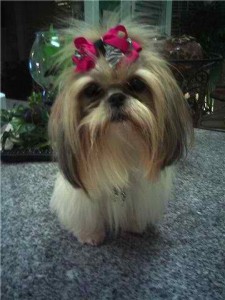 This small breed, often named nowadays as the Miniature or Teacup Shih Tzu, is less than 9 inches in height and weighs around 2 to 4 kilograms, which makes it roughly one half of the famous Shih Tzu. They are bred to have larger heads than usual, and even larger eyes that give them a very adorable, doll-like look. These dogs have wide heads, short muzzles, sweet expressions, sturdy bodies, dropped ears, and curved tails with long, flowing hair.
This small breed, often named nowadays as the Miniature or Teacup Shih Tzu, is less than 9 inches in height and weighs around 2 to 4 kilograms, which makes it roughly one half of the famous Shih Tzu. They are bred to have larger heads than usual, and even larger eyes that give them a very adorable, doll-like look. These dogs have wide heads, short muzzles, sweet expressions, sturdy bodies, dropped ears, and curved tails with long, flowing hair.
Coat
The Chinese Imperial dog have long double coats that are usually trimmed to be medium in length. Their coats have a variety of colors such as white, black, or cream, and can be bi or tri-colored.
Character
These lovable dogs are very playful and sweet, but at the same time quite sturdy and a tad bit more independent compared to most other dog breeds. They are active and intelligent, and very much enjoy being a lap dog. They are friendly dogs who get along well with strangers and other animals, especially when properly socialized.
Temperament
Because of their small size, the Chinese Imperial is very prone to the “small dog syndrome” which basically an issue they develop as a result of their masters overly spoiling or babying them. Even though these dogs are cute and cuddly and are easy to manage, it doesn’t mean that they don’t need exercise or boundaries. Like with all dogs, their owners must take them on daily walks and mentally stimulate them with toys and regular training. These dogs are great with kids, but only if the kids have been taught how to properly interact with dogs. They are not so suitable with very young children, because they are so small and can be quite fragile especially since small children can be quite rough when playing.
Care
The Chinese Imperial, having similar hair as the Shih Tzu, must be regularly groomed and preferrably trimmed once a month. Occasional bathing is required, and regular nail-trimming and ear cleaning. Since they are small, are calm, and enjoy the indoors, they are suitable to live in any living condition.
Training
The Chinese Imperial is a smart breed, but takes some effort to train. But once you find the right reward to motivate them (like food treats or toys) then training them is not impossible.
Activity
Daily walks would be ample enough to shed off this breed’s excess energy, as well as daily play and training. They would thoroughly enjoy an occasional off-leash experience inside a fenced in area, and are better off walking on the ground as compared to being carried around like what most people do with their small dogs.
Knowing the Miniature Schnauzer More
Origin
The Miniature Schnauzer is a dog breed that originated in Germany. The Miniature Schnauzer was known as the typical Schnauzer after their separation took place from the German pinscher and coarse-haired Schnauzer. The birth of Miniature Schnauzer came into being when crossed with Affenpinscher, Poodle and the Standard Schnauzer. The name itself is a Germanic word ?Schnauze,? which literally means ?muzzle.? Though, the general use of this dog is to being a ratter, but now is regarded mostly as a companion dog today.
Size
Miniature Schnauzer is a small and a well-built dog. The body is squared and well proportioned as well. The length of height to which Miniature Schnauzer usually reach up to be around 12 to 14 inches, 30 to 36 cm long with a weight of 10 to 15 pounds average that is 5 to 7 kilograms.
Coat
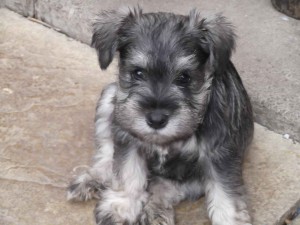 Miniature Schnauzer has a double-layered coat with its top being wiry and comes mostly in salt, silver, black, solid black and pepper colors. Since the undercoat of Miniature Schnauzer grabs the loosing hair of the body, the dog hardly sheds hair at all. Due to this quality, Miniature Schnauzer is considered the best home-keeping dog breed, especially for those with the problem of Asthma.
Miniature Schnauzer has a double-layered coat with its top being wiry and comes mostly in salt, silver, black, solid black and pepper colors. Since the undercoat of Miniature Schnauzer grabs the loosing hair of the body, the dog hardly sheds hair at all. Due to this quality, Miniature Schnauzer is considered the best home-keeping dog breed, especially for those with the problem of Asthma.
Character
One of those special dog breeds who are proclaimed as a larger than life companions ? Miniature Schnauzers have an extreme extrovert character. Although since he is terrier, you often found him to be full of himself. Lots of activity and work amuses him a lot. Additionally, he loves to be in the lap of his owner, which means that you can rest assure of his true friendly nature as well.
Temperament
The Miniature Schnauzer is usually a very jolly dog that is full with intelligence, loving nature and happiness. He has quite an energetic temperament with a playful nature and gets along quite well with children?s as well. You can add such attributes additionally to a Miniature Schnauzers temperament as keen, affectionate, coolly, docile and devoted to his master. If guided properly, Miniature Schnauzer can learn to go along well with other dogs as well.
Care
The dogs of this breed are usually quite active when inside the house, so it is considered the most proper place for a Miniature Schnauzer is to have a home where he can indulge with the family. The best care one can give to Miniature is to provide him a yard to play in, with toys and folks, while a walk once a day will additionally do good for him.
Training
The Miniature Schnauzer breed is highly attentive to learning and can quickly and easily be trained. These dogs have much enthusiasm inside them and they just love the inspiration and challenges that the different training patterns provide. However, the key to their great development is to teach them with patience, coolness, and rewarding them with treats while keeping consistency, positive reinforcements and repetitions.
Activity
For the dogs of this breed, since they are full of energy and love to live an active life, a daily dose of good walks and exercises will not only keep them fit and fine but also enable them to make the most out of their potentialities. Miniature Schnauzers are great dogs for most of the outdoor activities so if in case you are the owner of one, make sure you play games with your best mate in parks, took him to walks, and maintain his exercise routine.

